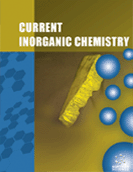Abstract
We review pressure-controlled calorimetric investigations for molecular compounds mainly focusing on the two-dimensional networked magnetic systems consisting of [Mn4] single molecule magnets (SMM) and the organic superconductive compounds with κ-(BEDT-TTF)4X composition, where BEDT-TTF is bisethylenedithiotetrathiafulvalene and X denotes counter anions. The former system shows sensitive magnetic features against external stimuli such as magnetic fields and pressures. The latter is known as typical dimer-Mott systems in effectively half-filled bands. At first, we introduce the idea and constructional details of the high-pressure calorimetry system designed for single crystal samples of molecule compounds weighing about 50 µg -1.0 mg. The adoption of extremely small resistance chips as a heater and thermometer parts made it possible for four-terminal detection of the temperature modulation with enough sensitivity even at low temperatures. Using this system, we measured single crystalline samples of 2D networked systems of [Mn4(hmp)6{N(CN)2}2](ClO4)2 (hmp- = 2-hydroxymethylpyridinate) under pressures up to 1.1 GPa and [Mn4(hmp)4Br2(OMe)2{N(CN)2}2](ClO4)2·2THF·0.5H2O up to 0.86 GPa. From the rather broad peak of thermal anomaly and its non-monotonous pressure dependence observed in [Mn4(hmp)4Br2(OMe)2{N(CN)2}2](ClO4)2·2THF·0.5H2O under pressures prompt us to consider that the competitive nature of the frustration effect due to the nearly orthogonal tilting of anisotropic spin axes and multi-body effects to form 2D Ising-type ordering. We also studied thermal anomaly at the superconductive transitions in dimer-based compounds with κ-(BEDT-TTF)2X. We claim there exists a gradual crossover of the electronic state inside the superconductive phase and the coupling strength between electrons to make a gap structure tends to vary from metal-insulator boundary to normal metal region.
Keywords: Heat capacity, high pressure, organic superconductor, single-molecule magnet.
 7
7


